We’ve heard these pattern names from different fashion features, and we’ve always read them on magazines but, learning a little more about these patterns’ names can be refreshing. Tartan plaid, Tattersall, Madras, the glen plaid, and the always on-trend gingham are just a few of the plaid pattern names we need to familiarize ourselves with, because of our love for the plaid.
Just How Many Types of Plaid are out there?
Let’s make a little trip down memory lane. Enter the brief history of plaid.
The plaid pattern was a mark of a Scottish man. Different patterns served as a clan or a family’s identity. If some families had crests or insignia, a Scottish family living in the 1600s wore kilts that proudly showed off their family’s grand plaid pattern. Scottish families have carried this tradition, but in the fashion world, these patterns somehow will never go out of style. Suffice it to say, this is probably one of the Scottish’s legacies in the fashion world.
That said, we probably have no idea just how many types of plaid patterns there are to date!
To answer our question, we do know this: that plaid commonly comes in eight different patterns–tartan, gingham, check or checkered Madras, windowpane, Houndstooth, glen plaid or the Prince of Wales check, and the Tattersall pattern.
Let’s dive deeper into each one:
Names of Different Types of Plaid & How to Differentiate Each
1. Tartan, also known as the Scottish plaid, or the ‘sett.’
If you ask anyone what their image of plaid is, and you presented them with a variety of patterns, the tartan or the Scottish plaid types will stand out to be their definition of what plaid is.
Tartan or the Scottish plaid is the plaid pattern best characterized by horizontal and vertical lines intersecting each other that together form different sizes of squares or checks all throughout the fabric. This pattern, aside from it being common in Scottish families, is basic in casual clothing.
Did you know that there are different types of tartan plaid? Being the bearer of family identity, there’s bound to be many different types of Scottish plaid/types of tartan plaid. Here are some of the different types of tartan plaid that you may recognize according to Vestiarium Scoticum: from the Manuscript formerly in the Library of the Scots College at Douay. With an Introduction and Notes, by John Sobieski Stuart. If you notice, the most popular tartan plaid patterns are the Royal Stewart tartan, Burberry plaid, Clan Wallace, and the Black Watch tartan.
Four Most Recognizable Types of Scottish Plaid/Tartan Plaid
- Royal Stewart Tartan is easily the most recognizable tartan among this list.

- Burberry Check is another recognizable tartan plaid thanks to the global foundation of the brand, Burberry. Burberry used this plaid initially for their coats’ linings but has since moved on to be the brand’s identity.

- Clan Wallace is best associated with the 3M brand, makers of scotch tapes and other kinds of adhesives. The Clan Wallace plaid, also known as the “Wallace Red” dates to 1842.

- Black Watch tartan appears in green and blue checks. The Black Watch 3rd Battalion, Royal Regiment of Scotland uses this plaid as their tartan or sett.
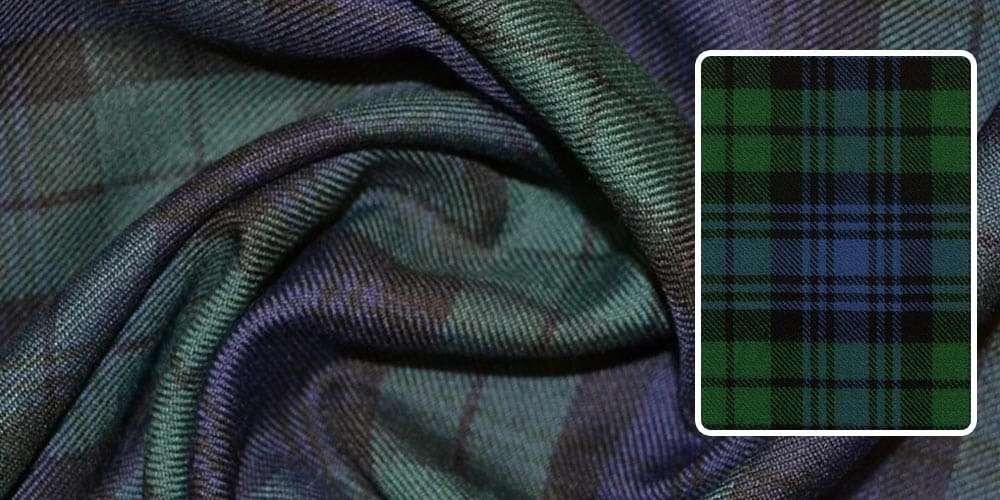
2. Gingham
According to fashion history, the gingham print began to make its way to consumers around the mid-18th century in Manchester, England. Another plaid print so popular it’s in every fast fashion clothing racks including J. Crew, Forever 21, and 3.1 by Phillip Lim.
People often mistake the gingham plaid pattern and the check/checkered plaid pattern for each other but, there is a huge distinction. While they both have uniform squares, the gingham is very different from checks/checkered regarding the transparency of some squares. The gingham has some light-colored squares, which come from the way that the yarns were weaved to end up with this pattern.
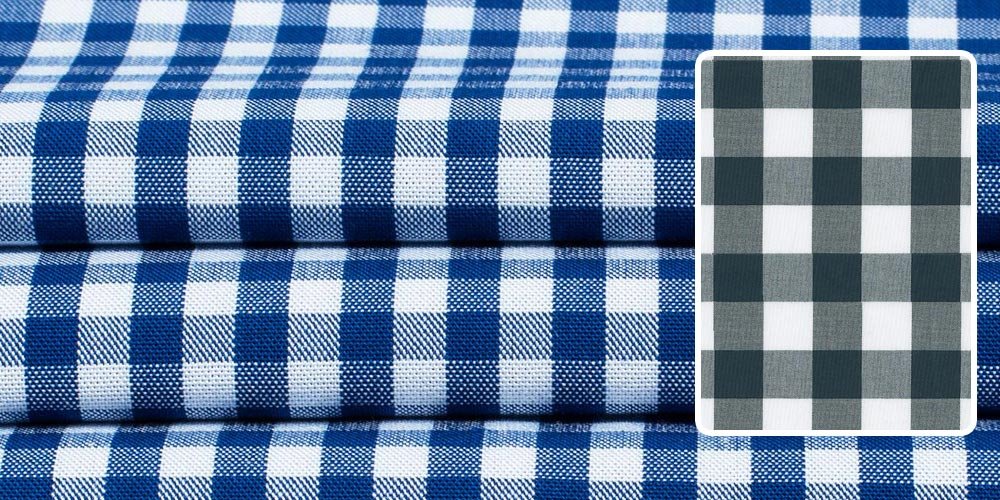
So, before you call a square-y pattern checkered, check the degrees of colors of the squares in the fabric. If it has some gradient or transparency, you bet it’s the gingham.
3. Check or Checkered
The check or checkered plaid is another plaid that has so many variations. People often mistake the gingham for checks (see point above), but what sets them apart is the size and the transparency of some of the squares on the fabric. The check has more solid squares and is usually smaller than the gingham.
Another thing that distinguishes the check or the checkered plaid from the gingham is that it usually appears in white and another color, with no light color in between. However, the checkered plaid has the following variations, which come in the form of Shepherd’s check, Buffalo check, Graph check, and the Gun Club check:
Different kinds of Checks/Checkered Plaid
- Shepherd’s Check is a plaid pattern, which originated from the rural part of Scotland. This type of plaid pattern is popular among Scottish shepherds who live on the border of England. In the early days, people from this region covered their sheep with the blanket bearing this type of check. The once sheep-blanket has become part of the men’s wardrobe.
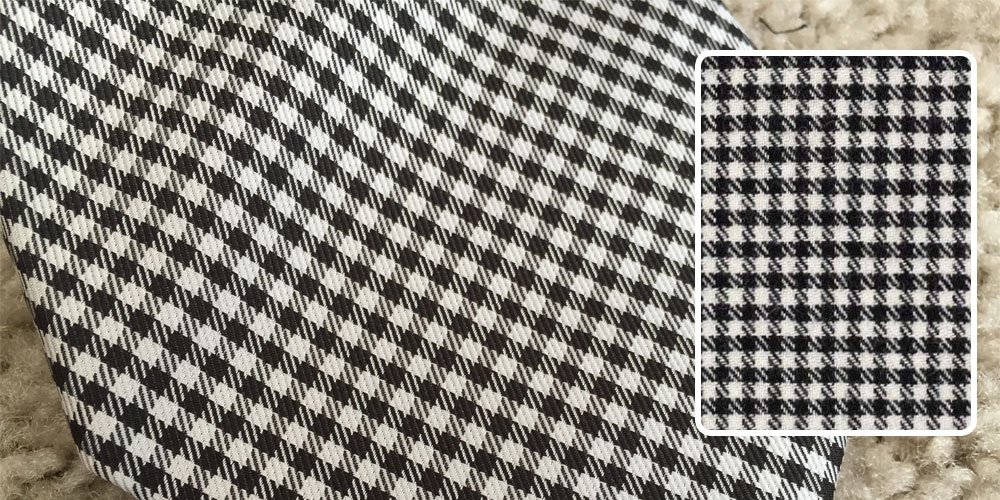
- Buffalo Check has a fascinating history that leads to its name. The buffalo plaid came from a descendant of the Clan MacGregor, named Jock McCluskey who lived in Montana around the 1800s. He traded with the Natives and used the heavy woven blanket in this pattern as his currency. Today, the buffalo check is easily recognizable by its large and heavy, red, and black check pattern.
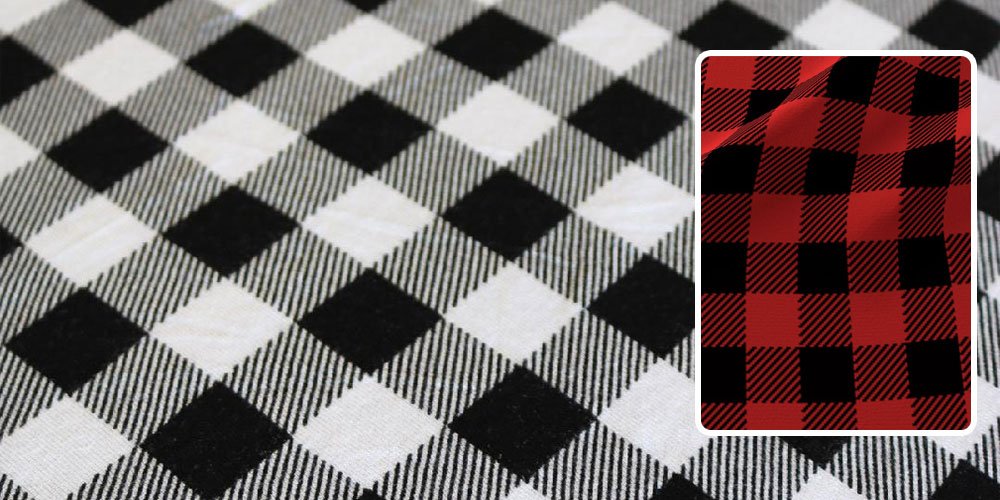
- Graph Check is distinguishable by its common white and blue lines. The name somehow came from the graph pattern used in the mathematics paper in school.
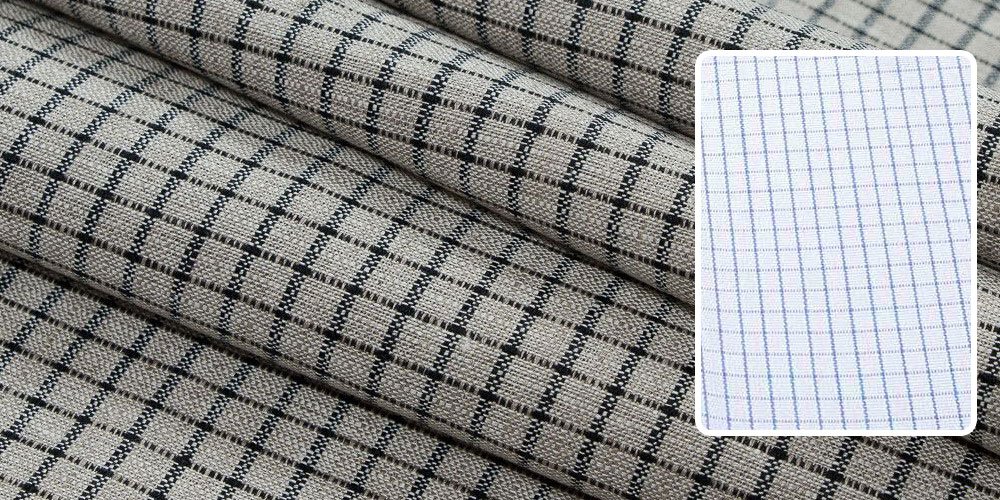
- Gun Club Check is another check with Scottish origin. The American Gun Club first used this pattern for their coats in 1874. Like the tartan in the kilt, the Gun Club check served as the identity of the organization.

4. Madras
If you notice, the checks and tartans all bear the heavy coloring, but this plaid deviates from it.
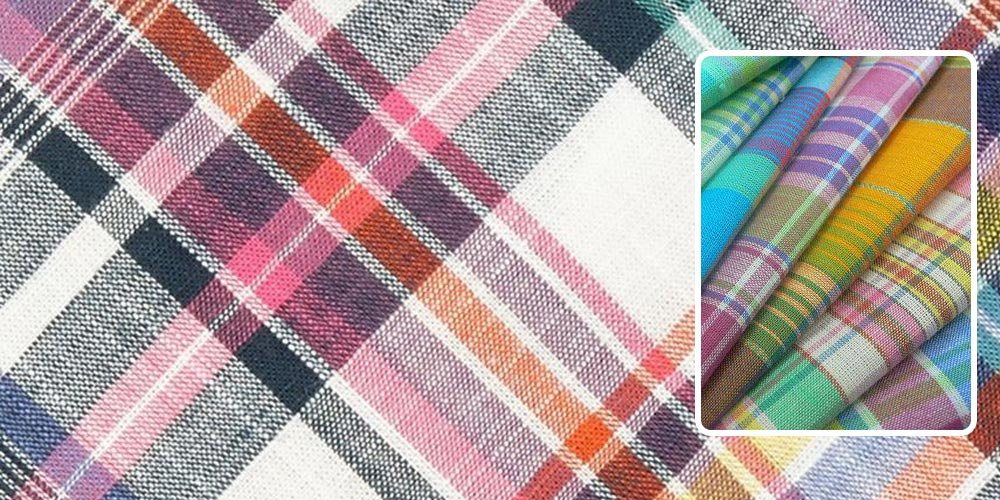
We can trace the origins of the madras plaid to Chennai, India in the 1800s. The name is the old name of Chennai. This plaid is very popular because of its vibrant colors. The pattern can appear in bright orange, pinks, and yellows, which can somehow remind you of the summer season. As proof, many skirts and shorts sold have this plaid; articles of clothing which you will often associate with summer.
The madras is a beautiful form of the plaid that gives off warm, fun, and happy vibes.
5. Windowpane
The windowpane, as the name implies, is a variety of the plaid pattern, which somehow looks like their windowpanes. This is like the bigger brother of the graph check but is somehow on a different league of its own thanks to its popularity in men’s clothing.
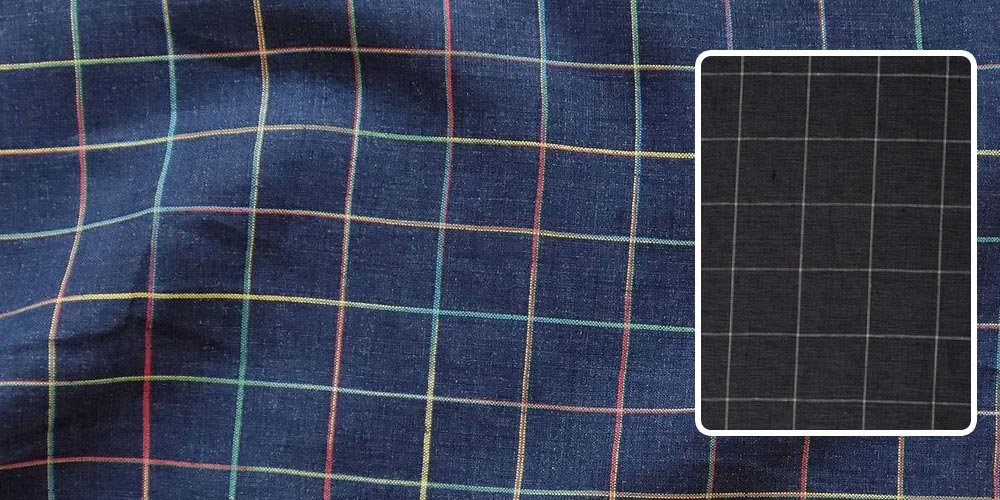
The way the squares on the windowpane appear can give its wearer different personalities.
If the windowpane plaid appears lighter or less dense, it gives off the impression of a more formal vibe; however, if the suit has stronger windows, it somehow makes the wearer appear more casual and relaxed.
6. Houndstooth
When I began researching about the different types of plaid, I did not expect to see the Houndstooth pattern to come to the results.
The Houndstooth is characterized by its sharp and pointy edges and dates back as far as 300 BC according to Swedish history. However, Scottish history books also tell us that this type of plaid pattern goes back to the Scotts, like the tartans and the checks. Houndstooth plaid got its name from a dog bite. If the plaid appears smaller, you can sometimes call it the puppytooth.
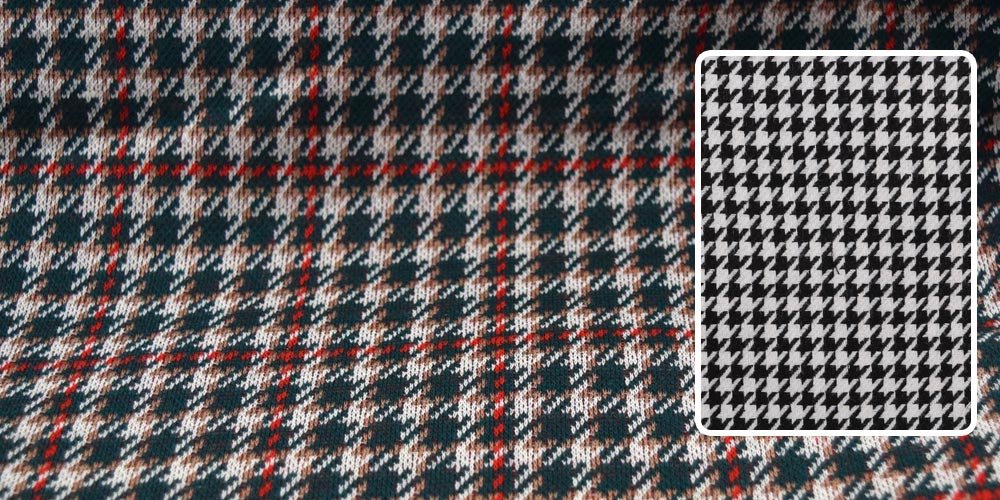
Some of the notable designers who have made this plaid as their own are Alexander McQueen, Christian Dior, and Yohji Yamamoto. This plaid pattern is favorite among women, especially in workwear.
Thanks to the duotone appearance of the houndstooth, it became trendy among women working in the corporate world. It makes its wearers appear business-minded without sacrificing their sense of style.
7. Glen or Prince of Wales Check
The Glen plaid is very popular these days. Fall/Winter of 2017 saw it come back in the fast fashion scene and became very popular to young people, men, and women alike.
Glenurquhart in Inverness-shire, Scotland is the origin of this plaid’s name. In the 19th century, this plaid became so popular that then Prince of Wales, Sir Edward VIII.

However, further research revealed that the association of the glen plaid to the actual Prince of Wales check is only because these two plaid patterns appeared so similar.
In popular culture, the press criticized the former president of the United States, Ronald Raegan, for wearing this type of plaid because it looked too casual. Little did the press and these critiques know, this plaid had royal origins!
8. Tattersall
Last but definitely not the least among our list of traditional plaids is the Tattersall.

The Tattersall is another variation of the check, which originated in London. The horses on the Tattersall market first used this plaid as blankets. Over time, the Tattersall plaid became part of the brand’s trademark. The Tattersall grew its popularity in fashion since then.
If you are sporting a Tattersall plaid, you are giving off the relaxed vibe and someone who is fond of horses.
As for plaid lovers, we must know which type of plaid is which for us to know where to wear this type of clothing best. As you can see in this post, the plaid gives off different vibes, which make its wearer, exude more impact. Who says you cannot be formal with a kilt? This post says otherwise! The pattern so worthy of royalty, the plaid will remain in the fashion scene for many years to come.


Different plaid patterns served as a clan identity? for sure this is probably one of the Scottish’s legacies in the fashion world.
I spent a great deal of time to find something like this!
Do you have any type of suggestions for creating posts?
That’s where I constantly struggle and also I simply wind up gazing empty display for very long time.